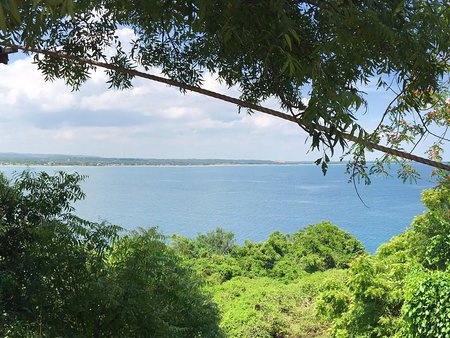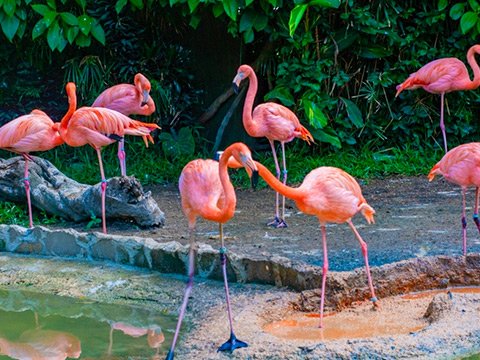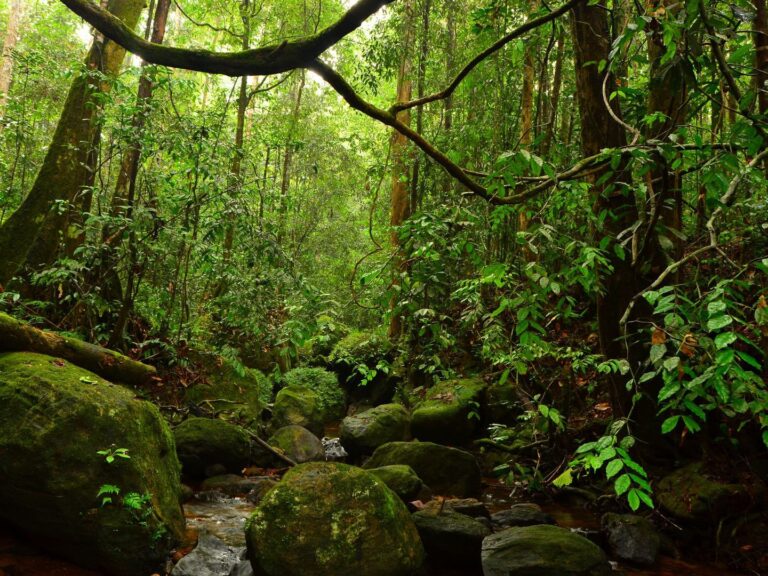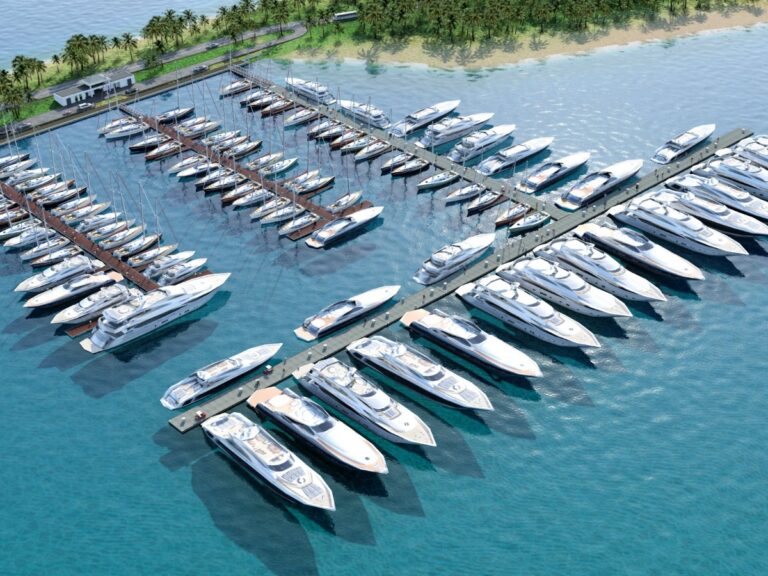Fathom Five Fisheries: Pioneering Underwater Culinary Journeys in Trincomalee’s Historic Shipwreck Alley

Introduction: A New Wave of Tourism in Sri Lanka
Sri Lanka’s east coast, particularly Trincomalee, is poised for a tourism revolution. Traditionally celebrated for its pristine beaches, deep natural harbor, and vibrant marine biodiversity, this region now offers an innovative, immersive underwater dining experience: Fathom Five Fisheries — a reef-to-restaurant submarine dining venture set within the renowned Shipwreck Alley.
This venture promises more than just a meal; it invites diners into a spectacular underwater world where marine ecology meets naval history, delivering an exclusive sensory journey beneath the waves. It perfectly encapsulates the emerging global demand for experiential tourism—where the journey and setting are as essential as the destination itself.
The Significance of Trincomalee’s Shipwreck Alley
Shipwreck Alley lies off Trincomalee’s coastline, a stretch that hosts over a dozen historically important sunken vessels, spanning from colonial-era ships to World War II naval wrecks. These shipwrecks are not only monuments of naval history but have transformed into artificial reefs fostering rich marine ecosystems. The coral reefs around them support more than 150 species of reef fish, crustaceans, and marine flora, making it a hotspot for divers and marine biologists.
According to Sri Lanka’s Ministry of Tourism and Wildlife, diving tourism around Trincomalee generates nearly 25% of the country’s total marine tourism revenue, estimated at LKR 3.5 billion annually. The appeal lies in its unique combination of heritage, ecology, and adventure.
By introducing an underwater dining experience that incorporates the submarine exploration of these shipwrecks, Fathom Five Fisheries aims to attract a new market segment — including luxury travelers, culinary tourists, marine enthusiasts, and history buffs.
The Concept: Reef-to-Restaurant Submarine Dining
At the heart of this initiative is the innovative reef-to-restaurant philosophy, prioritizing sustainability, locality, and culinary excellence. Guests descend in custom-built submarines fitted with panoramic windows to an underwater dining room situated near the reefs and wrecks. Here, a curated menu of locally sourced seafood and produce is served, reflecting Sri Lanka’s rich marine heritage and culinary traditions.
This is a step beyond traditional dining or even underwater restaurants that rely on artificial tanks or shallow water installations. The submarine element allows mobility and exploration, providing guests with real-time views of marine life and shipwrecks while enjoying gourmet meals.
Market Context & Global Trends in Underwater Dining
Globally, underwater dining is an emerging luxury niche that intersects food tourism, adventure, and conservation awareness. Market research by Allied Market Research (2023) estimates the underwater restaurant sector will reach USD 1.1 billion by 2030, growing annually at 12.3%.
Consumer trends show rising demand for immersive, exclusive experiences, especially among millennials and Gen Z travelers, who prioritize sustainability and meaningful engagement with local culture. Over 68% of luxury travelers now seek experiences tied to nature and heritage rather than material goods.
Sri Lanka’s government has identified experiential tourism as a strategic growth area under the National Sustainable Tourism Strategy 2030, aiming to increase tourist spending by diversifying product offerings beyond beaches and wildlife safaris.
The Technical and Safety Dimensions
Creating a submarine dining experience presents significant technical challenges and safety requirements. The submarine vessels must meet international maritime safety standards under SOLAS (Safety of Life at Sea) protocols, including emergency evacuation systems, pressure regulation, and certified operators.
A partnership with Sri Lanka’s Ports Authority, Maritime and Coastguard Agency, and Marine Environment Protection Authority will be essential to ensure compliance and environmental safeguards. Regular inspections and training for crew and chefs will maintain high standards.
Innovative submarine design, such as battery-powered silent propulsion to minimize noise disturbance, and transparent, reinforced acrylic windows offering 270-degree visibility, will enhance guest experience while protecting marine life.
Environmental and Cultural Considerations
Fathom Five Fisheries is committed to environmental stewardship. The dining operations will incorporate:
- Strict no-plastic policies and waste management systems to prevent pollution.
- Sustainable seafood sourcing aligned with the Marine Stewardship Council’s guidelines.
- Partnership with local marine biologists to monitor coral health and minimize habitat disruption.
- Anchoring methods designed to avoid reef damage.
Respecting Trincomalee’s naval heritage is equally important. Many shipwrecks are war graves and protected sites under Sri Lanka’s Department of Archaeology and the War Graves Ordinance. The project will maintain strict non-intrusion policies and educational briefings for guests about the historical significance of the sites they visit.
Economic & Social Impact Projections
Based on comparative analysis of underwater dining ventures worldwide and Sri Lanka’s tourism data, the economic impact is promising:
- Annual revenue projection of LKR 350 million (~USD 1.1 million) within three years of launch.
- Creation of approximately 80 direct jobs (submarine crew, chefs, guides, hospitality staff) and 150 indirect jobs in fisheries, transport, and marketing.
- Extension of tourist stay duration by 1.5 days on average, increasing hotel and ancillary service demand.
- Boost to local fisheries through demand for sustainably caught seafood, benefiting coastal communities.
- Raising marine conservation awareness among over 10,000 visitors annually through educational material and guided experiences.
Case Studies of Underwater Dining Excellence: Learning from the Best
1. Ithaa Undersea Restaurant, Maldives Ithaa, launched in 2005 by the Conrad Maldives Rangali Island Resort, is the world’s first all-glass underwater restaurant. Situated 5 meters below the ocean surface, it offers uninterrupted views of coral gardens and tropical fish, serving a fusion of Western and Maldivian cuisine. Ithaa’s exclusivity allows only 14 guests per seating, making it highly sought after. It attracts approximately 15,000 visitors annually and contributes over USD 5 million yearly to the local economy.
Lessons for Trincomalee: Exclusivity, immersive views, and a focus on local cuisine create a high-end luxury appeal. Maintaining small guest numbers enhances safety and exclusivity but demands efficient booking management.
2. The Subsix, Maldives Subsix combines underwater dining with nightlife, located 6 meters below sea level. It targets a younger, party-focused luxury crowd by combining gourmet seafood with live DJ events. Subsix’s integration of entertainment broadens its appeal and creates a unique niche in underwater hospitality.
Lessons for Trincomalee: Blending gastronomy with entertainment can diversify appeal, attracting wider demographics and repeat visits, potentially applicable for special events or cultural nights celebrating Sri Lankan heritage.
3. Under, Norway Opened in 2019, Under is Europe’s first underwater restaurant. Its architectural design functions as a marine research station, promoting biodiversity studies alongside fine dining. Seating 40 guests, it uses locally sourced Nordic ingredients in a tasting menu format, blending culinary innovation with scientific education.
Lessons for Trincomalee: Coupling gastronomy with research and conservation enhances the venture’s credibility and adds a unique educational dimension, potentially drawing academic tourism.
4. Sea Pavilion, Maldives An underwater bar and lounge dedicated to sustainable seafood and coral reef preservation, the Sea Pavilion is integral to local conservation efforts, involving tourists in coral planting programs.
Lessons for Trincomalee: Integrating guests into conservation projects fosters environmental stewardship, strengthens brand image, and enhances guest satisfaction.
5. Ocean Restaurant, Bora Bora, French Polynesia Known for spectacular marine views and Polynesian-inspired seafood, Ocean Restaurant attracts over 30,000 tourists annually. It partners with local fishermen to ensure freshness and sustainability, supporting local communities economically.
Lessons for Trincomalee: Local community involvement and authentic culinary narratives are crucial for cultural integrity and guest engagement.
6. Submarine Grill, Florida Keys, USA Offering a unique mobile dining experience aboard a mini-submarine cruising shallow reefs, Submarine Grill combines adventure and cuisine, targeting niche adventure-seeking tourists.
Lessons for Trincomalee: Mobility in underwater dining allows a dynamic experience, exploring different reefs and shipwrecks per trip, adding novelty and repeatability.
The Culinary Experience: A Feast from the Sea
The Fathom Five Fisheries menu is crafted by top Sri Lankan chefs, emphasizing regional spices, herbs, and flavors that complement the fresh reef fish and shellfish caught sustainably by local fishermen. Dishes may include:
- Grilled reef fish marinated with native cinnamon and cardamom
- Coconut-infused prawn curry with freshly harvested seaweed salad
- Traditional crab curry with a modern twist
- Seafood platter featuring lobster, octopus, and snapper paired with regional fruits
- Sri Lankan black tea and spice-infused desserts
The culinary team prioritizes allergy awareness, freshness, and seasonal variation, ensuring each menu cycle highlights the best sustainable catch.
Target markets includ
Target markets include:
- Affluent international travelers seeking unique luxury experiences (Europe, Middle East, East Asia)
- Eco-tourists and marine conservation enthusiasts
- Sri Lankan diaspora seeking premium local experiences
- Culinary tourists and gastronomy festivals
Marketing channels:
- Partnerships with luxury travel agencies and global culinary event organizers
- Digital campaigns showcasing the underwater experience through immersive videos and influencer collaborations
- Eco-tourism and heritage tourism forums and conferences
- Collaboration with Sri Lanka Tourism Development Authority for domestic promotion
Ethical & Legal Considerations
Fathom Five Fisheries complies fully with:
- Sri Lanka Intellectual Property Act No. 52 of 1979 to protect original creative content.
- International Covenant on Civil and Political Rights (ICCPR) Act No. 56 of 2007 respecting human rights and visitor safety.
- Maritime safety laws and environmental protection regulations.
- Cultural heritage protection acts ensuring no disturbance to war graves or archaeological sites.
Contracts with local fishermen include fair trade agreements, ensuring ethical sourcing and community benefit sharing.
Conclusion: A Vision for Sri Lanka’s Future Tourism
Fathom Five Fisheries represents an exciting confluence of innovation, sustainability, and culture. It offers Sri Lanka a chance to lead in the niche of underwater gastronomy while championing marine conservation and heritage preservation.
The project embodies the future of experiential travel—where culinary adventure, environmental awareness, and historical education come together to create memories as deep as the ocean itself.
Disclaimer
This article has been authored and published in good faith by Dr. Dharshana Weerakoon, DBA (USA), based on publicly available data, professional experience, and industry insight. It is intended solely for educational, journalistic, and public awareness purposes. The author accepts no responsibility for any misinterpretation, adaptation, or misuse of the content. Views expressed are personal and do not constitute legal or financial advice. This article complies with the Intellectual Property Act No. 52 of 1979, the ICCPR Act No. 56 of 2007, and relevant data ethics.
✍ Authored independently and organically—not AI-generated.
Further Reading: https://dharshanaweerakoon.com/rekindling-wellness-sri-lankas-hidden-hot-springs-for-arthritis-relief-retreats/






